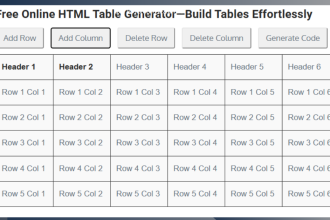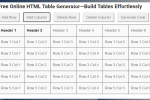Provide your website URL to generate the custom robots.txt file code for your WordPress website.
Free Custom Robots.txt Generator
How to Confirm robots.txt?
To confirm the contents of a robots.txt file, you can carry out the following steps:
1. Locating the robots.txt file: You should find the robots.txt file at the root directory of the website you wish to verify. For instance, if your website is www.example.com, you can locate the robots.txt file at www.example.com/robots.txt.
2. Accessing the file: Just type the URL of the robots.txt file into your web browser’s address bar. For instance, www.example.com/robots.txt. This action will show the content of the robots.txt file within your browser window.
3. Reviewing the file: Take a closer look at the robots.txt file’s content. This file comprises directives that provide guidance to web crawlers like search engine bots, specifying which sections of the website to crawl and which ones to exclude. It follows a particular syntax and set of regulations. Ensure that the directives in the file are well-structured and accurately represent your intended guidance for search engine bots.
4. Validating the syntax: Verify the syntax of your robots.txt file by using online robots.txt validators. Several tools are available for analyzing the file and identifying any possible issues or errors. Some commonly used validators include Google’s Robots.txt Tester, Bing Webmaster Tools, and various third-party websites.
5. Testing with a web crawler: Once you’ve confirmed the syntax, you can test the performance of your robots.txt file by employing a web crawler or a search engine bot simulator. These utilities can help you observe how search engine bots interpret the instructions in your robots.txt file and determine which pages they can explore and index. Various web crawler tools are accessible online, such as Screaming Frog SEO Spider, Sitebulb, or SEO Spider from Netpeak Software.
By adhering to these steps, you can verify the content of your robots.txt file, ensure its proper formatting, and confirm that it aligns with your intended guidelines for search engine bots
Getting to know this tool better
This tool serves as a straightforward and user-friendly robots.txt generator intended for the Blogger platform. Users can effortlessly create a robots.txt file for their website by simply inputting their website link into the tool.
By employing this tool, users can restrict search engines from indexing particular pages on their websites, such as search, category, and tag pages. Additionally, it incorporates the website’s sitemap link, aiding search engines in efficiently indexing the site.
Although primarily tailored for blogger websites, this tool can be adapted for use on any website by modifying the code. Nevertheless, it is advisable to verify the generated robots.txt using Google’s robots.txt tester tool before implementing it on your website.
This resource proves invaluable to webmasters, bloggers, and website proprietors seeking to customize the indexing behavior of search engines on their sites. It empowers them to enhance their website’s SEO and control which pages search engines are permitted to index.
This tool is crafted by the admin of ScholarInfoZone, aimed at assisting websites in effortlessly generating a robots.txt file for their website at no cost.







